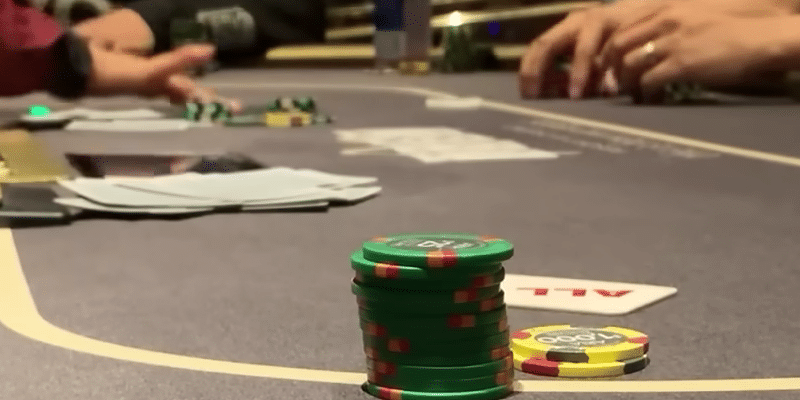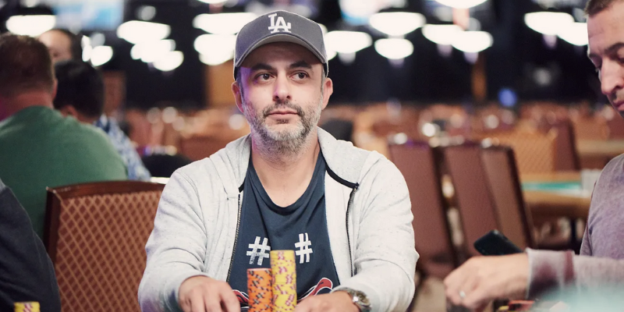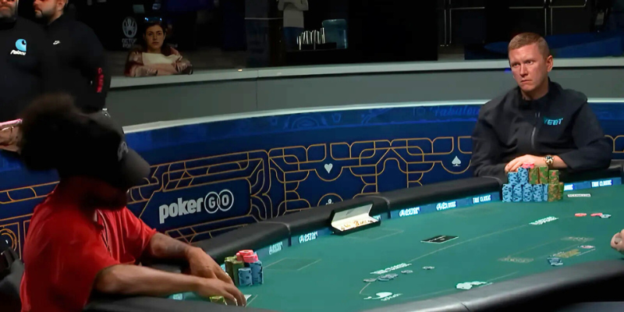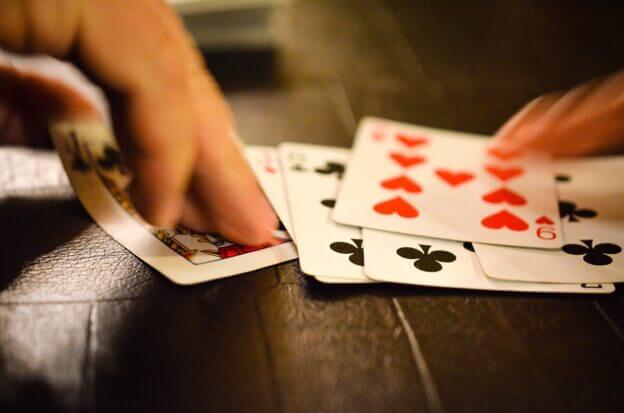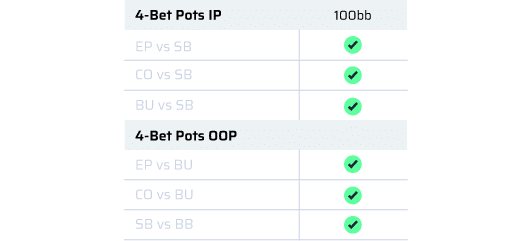In the world of poker, we study preflop and flop play diligently, and rightfully so, as they form the foundation of any successful poker game. But there’s an often-neglected abundance of opportunities further down the game tree that can significantly enhance your win rate in Pot-Limit Omaha: river play.
Surprisingly, very few talk about it in the PLO community, and even less study it. In this post, we’ll delve into the core concepts of river play that every PLO player should grasp to gain that competitive edge.
Why Should You Study River Play?
1. It generates the biggest edges:
While many players focus their efforts on earlier streets, you can gain a substantial advantage by understanding the nuances of river decisions.
2. The biggest pots
Rivers might be less frequent, but they often host the most significant pots. Even small improvements in your river decision-making process can translate into substantial gains.
3. Embracing a new mindset
On earlier streets, equity reigns supreme as you aim to calculate how you are doing against different parts of your opponent’s range. However, on the river, shifting your focus from opponent ranges to individual cards is crucial (like blockers and unblockers). Which card increases the likelihood of your opponent bluffing or value betting? It’s a whole new mindset that can make or break your river play.
Now, let’s dive deeper into this new river mindset by exploring different river situations.
Is My Hand Strong Enough to Bet?
When contemplating a value bet, especially with a non-nutted hand, consider what your opponent is likely calling with. Think about weaker hand categories and what specific attributes those hands would need in order to call.
For instance, if you are holding top set and seek a call from an overpair when the flush draw misses, we would want to block the flush draw. Why? Blocking the missed draw makes it more likely that your opponent will call lighter, assuming you might have missed the draw. On the other hand, if you unblock the draws, you may want to induce a bluff or avoid the risk of running into a stronger hand by opting for a check/call.
EXPLOIT: If you doubt your opponent’s ability to bluff frequently enough, a small value bet can be more profitable than a check/call given that a portion of the EV of checking is derived from your opponent turning certain hands into bluffs.
Bluff-Catching with a Strong Range
Now, let’s tackle a river scenario where we’ve bet thinly for value but are faced with a raise. What’s the best course of action? Start by evaluating your own range and considering how much of it needs to be folded to avoid becoming exploitable.
If your opponent makes a pot-sized raise, you’ll typically need to fold approximately 60-65% of the time. Given that you should have about 33% of your range as bluffs when betting pot, you can eliminate these hands from your calling range right away. This leaves you with the task of finding another ~30% of hands to call with and maintain a balanced approach.
Now, if your range is strong (featuring many nut and second-nut hands) you can afford to be more generous with the hands you fold. Focus on calling with your value hands and those with exceptional blockers to maintain a resilient strategy.
EXPLOIT: When you’re in a situation where coming up with viable bluffs is challenging for you, chances are your opponent faces the same dilemma and may be under-bluffing. In such cases, don’t hesitate to overfold, as it can be a profitable adjustment in response to your opponent’s tendencies.
If you’re ready to learn more about PLO, join the 4-Card PLO membership.
Bluff-Catching with a Capped Range
When you’re confronted with the decision of whether to bluff-catch, the first step is to decipher what your opponent is likely betting with. This involves a two-sided analysis: examining the line they’ve taken throughout the hand and dissecting their river bet sizing. For a visual example of this concept, refer to this hand example.
By compiling the information from their chosen line and bet sizing, you can pinpoint the most probable hands in their range for this scenario.
Once you’ve identified potential hands that fit this line and bet sizing, assess how your hand does against these likely hands and whether you block them. In the hand in the video, the spade blocker is less relevant due to the likely fact our opponent has a straight, so we would want to have straight blockers to make a hero call.
EXPLOIT: Many players struggle to balance their small river bet sizings, often skewing heavily toward thin value bets. This tendency can be exploited by adjusting your strategy to folding or raising more marginal hands.
Moreover, it’s vital to ascertain the composition and strength of your own range as you reach the river. If your range has been capped in previous streets, you’ll quickly run out of strong hands to call with.
Conclusion
River decisions are where the game’s most crucial moments occur, and by honing your skills in this area, you can boost your chances of success in PLO.
By delving into these essential concepts, you can enhance your understanding of PLO strategy and improve your overall gameplay. It’s an invaluable skill that can set you apart in the world of poker.
